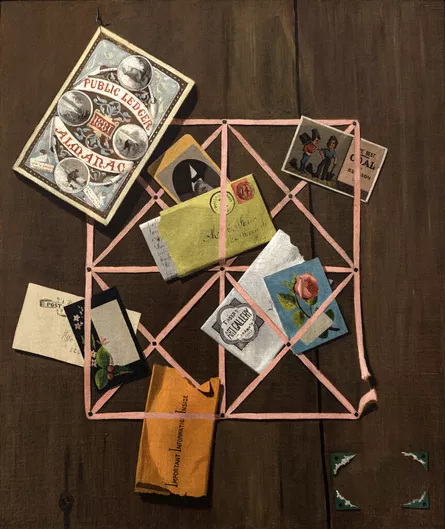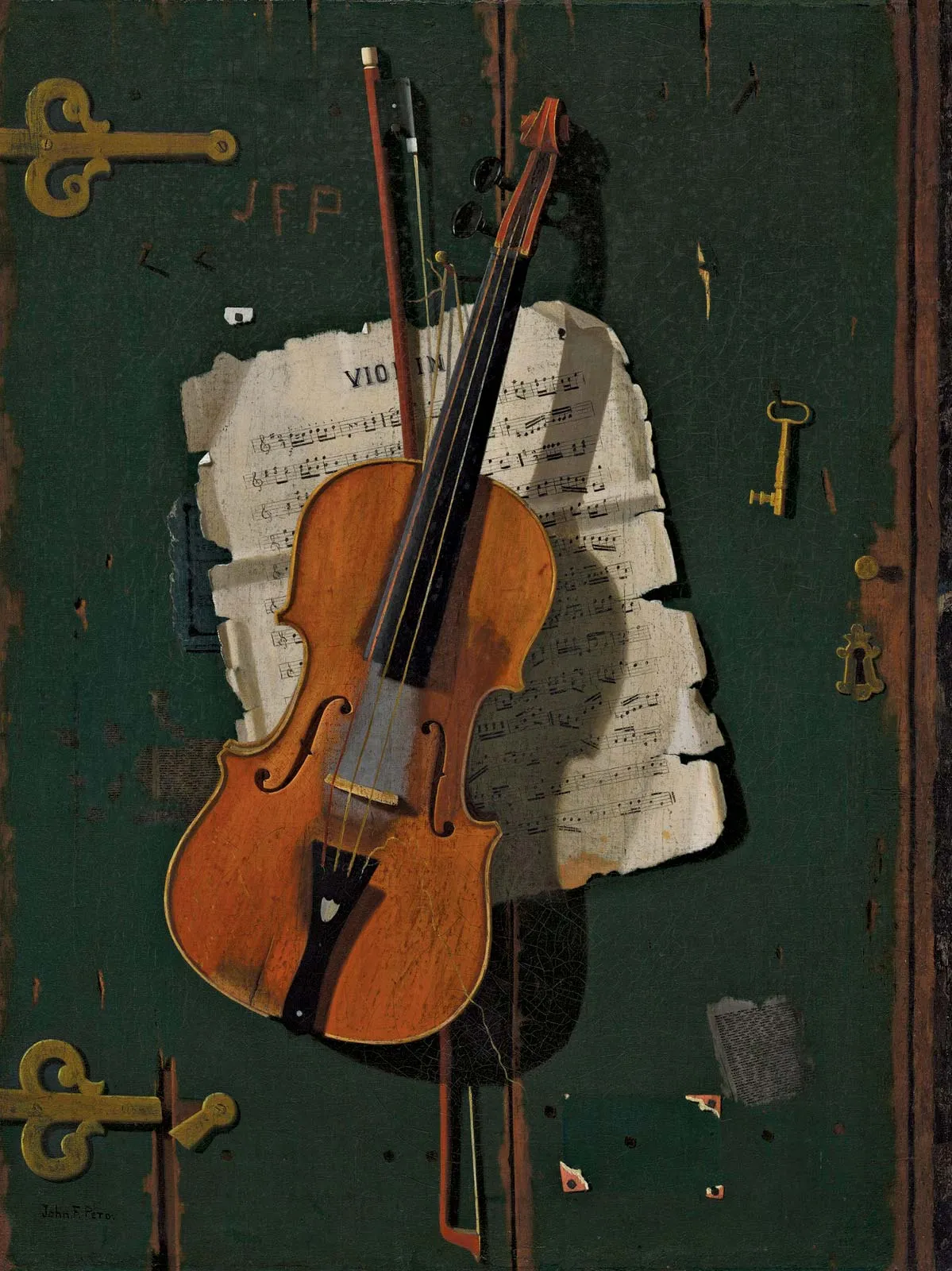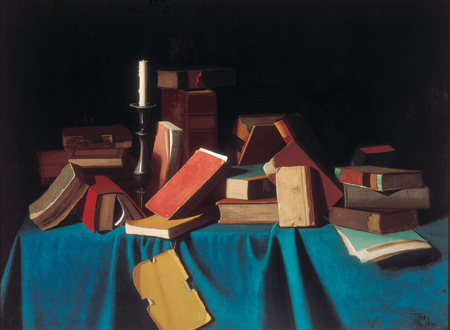
John Frederick Peto, born 21 May 1854, was an American trompe-l'œil painter who was long forgotten until his paintings were rediscovered along with those of fellow trompe-l'œil artist William Harnett.
Peto was born in Philadelphia, Pennsylvania, to Catherine Marion Ham Peto and Thomas H. Peto. He studied at the Pennsylvania Academy of the Fine Arts at the same time as Harnett. Until he was in his mid-thirties, he submitted paintings regularly to the annual exhibitions at the Philadelphia Academy.
Peto opened a studio in 1880, and earned a living by painting rack pictures for Philadelphia's business and professional men. He was reputed to have made photographic portraits as well as painting portraits to support himself.
Peto was a master of trompe-l'œil, a genre of still life that aims to deceive the viewer into mistaking painted objects for reality. The subject matters of Peto's paintings consisted of things like pistols, horseshoes, bits of paper, keys, books, and the like. He frequently painted old time "letter racks", which were a kind of board that used ribbons tacked into a square that held notes, letters, pencils, and photographs.
In 1887 he married Christine Pearl Smith of Leredo, Ohio. In 1889, he moved to the resort town of Island Heights, New Jersey, where he built a house. They had one daughter, Helen who studied cello, taught herself piano, and had an exquisite lyric-soprano voice. Peto and his wife Christine took in seasonal boarders, he found work playing cornet at the town's camp revival meetings, and he supplemented his income by selling his paintings to tourists. He never had a gallery exhibition during his lifetime.

Peto painted in semi-seclusion and obscurity for the remainder of his life. He died of Bright’s Disease in Island Heights, New Jersey in 1907, age 53 years old. Peto was almost completely forgotten until 1949, when Alfred Frankenstein published an article in which he identified nineteen paintings from major private collections and museums that had been attributed to Harnett but had really been painted by Peto. When the catalogs of the two artists were posthumously analysed, it was determined that "many of [Peto's] canvases received forged signatures of William Harnett." With the advent of further interest and research on American still life painting, Peto gradually emerged as a distinct artistic personality whose work could be differentiated from Harnett's by its looser brushwork, warm tonality, and aura of subtle melancholy created by his tendency to represent objects deteriorated by age.
While his work was not valued during his life time, by the 20th and 21st Century, Peto's work had garnered more respect. Opened in 2011, The John F. Peto Studio Museum preserves the artist's house and studio in Island Heights, New Jersey. Built in 1889, the house was mostly designed by Peto and remained in his family for over 100 years. The house has been furnished to appear as during Peto's residency around the turn of the 20th century, and features reproductions of his paintings.
Reading Recommendations & Content Considerations

and the Idea of Still-Life Painting
in Nineteenth- Century America



























































































Comments